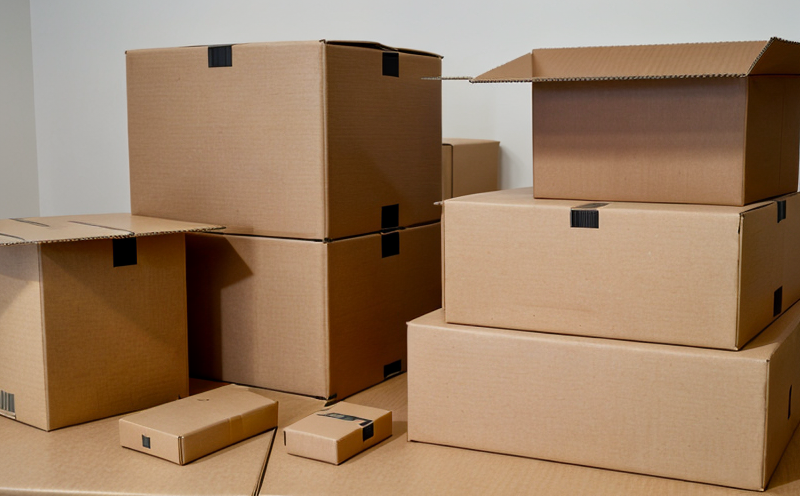ASTM D3985 Oxygen Transmission Rate of Rigid Barriers
ASTM D3985, titled “Oxygen Transmission Rate of Rigid Barriers,” is a standardized test method used to determine the rate at which oxygen can pass through various types of rigid packaging materials, such as films, foils, and laminates. This service is critical for ensuring that packaged products remain fresh and safe by preventing the ingress or loss of oxygen during storage and distribution.
The ASTM D3985 test method uses a modified atmosphere packaging (MAP) system to measure the oxygen permeability of rigid materials. The apparatus consists of two chambers, one containing the sample material and the other exposing it to pure oxygen under controlled conditions. A constant flow of nitrogen is introduced into both chambers to ensure that the oxygen concentration in the chamber with the sample remains stable.
The test begins by placing a known weight or thickness of the rigid barrier between the two chambers. The system then monitors changes in oxygen content over time, typically using an infrared sensor or other appropriate measurement devices. From these measurements, the oxygen transmission rate (OTR) is calculated based on the change in pressure and temperature.
The primary purpose of this test is to evaluate the integrity and effectiveness of packaging materials used for long-term storage or transportation, especially where maintaining a stable atmosphere is essential. For instance, it can help determine whether a particular material is suitable for oxygen-sensitive products like pharmaceuticals, foodstuffs, and electronic components.
Some common applications include:
- Evaluating the performance of materials used in modified atmosphere packaging (MAP) systems
- Ensuring that rigid barriers meet specific quality standards or regulatory requirements
- Determining the suitability of packaging materials for long-term storage conditions
- Identifying potential leaks or weaknesses in barrier design
The accuracy and reliability of ASTM D3985 testing are crucial, especially when dealing with sensitive products that require precise control over their environment. By conducting this test, manufacturers can ensure product quality and shelf life while minimizing waste and ensuring compliance with industry standards.
The test results provide valuable information for both quality managers and R&D engineers in developing and refining packaging solutions. Compliance officers also benefit from these tests by verifying that the packaging meets regulatory requirements. This service is particularly important for sectors such as pharmaceuticals, food & beverage, electronics, and cosmetics where maintaining product integrity during storage and transport is paramount.
For procurement teams, understanding the OTR of rigid barriers helps in selecting the most appropriate materials based on performance specifications rather than just cost considerations. In summary, ASTM D3985 testing plays a vital role in ensuring that packaging performs its intended function effectively while maintaining product quality and safety.
Why It Matters
Ensuring the integrity of rigid packaging materials through ASTM D3985 testing is crucial for several reasons:
- Product Quality Maintenance: Properly sealed packages help maintain product quality by preventing oxidation, spoilage, or contamination.
- Extended Shelf Life: By controlling the oxygen content within the package, products can be preserved for longer periods without compromising their freshness or safety.
- Regulatory Compliance: Many industries are subject to strict regulations regarding packaging integrity and OTR. Meeting these standards ensures that businesses remain compliant with legal requirements.
- Economic Efficiency: Reducing waste due to spoilage or contamination translates directly into cost savings for companies.
- Sustainability Goals: Minimizing the amount of oxygen that enters or escapes from packages helps reduce environmental impact and supports sustainability initiatives.
In summary, ASTM D3985 testing is essential not only for maintaining product quality but also for supporting broader business goals related to cost efficiency and environmental responsibility. It provides a robust framework for evaluating packaging performance across various sectors.
Eurolab Advantages
EuroLab, as your trusted partner in ASTM D3985 testing, offers several unique advantages:
- Comprehensive Testing Capabilities: Our state-of-the-art laboratory provides a full range of packaging tests to meet all your needs.
- Accurate and Reliable Results: We employ highly skilled technicians using cutting-edge equipment to ensure precise measurements every time.
- Expertise in Industry Standards: Our team is well-versed in international standards like ASTM D3985, ensuring that our tests align perfectly with industry expectations.
- Dedicated Customer Support: From initial consultation through final report delivery, we offer personalized assistance to guide you every step of the way.
- Fast Turnaround Times: Leveraging advanced technology and streamlined processes allows us to deliver results quickly without compromising accuracy.
- Comprehensive Reporting: Our detailed reports provide clear insights into your packaging performance, backed by robust data analysis.
Partnering with EuroLab means working closely with experts who understand the nuances of ASTM D3985 testing and can help you achieve optimal results. Whether you're a quality manager looking to enhance product integrity or an R&D engineer seeking innovative solutions, we have the expertise to support your objectives.
Environmental and Sustainability Contributions
- Reduction in Waste: By accurately controlling the oxygen content within packages, less spoilage occurs, which translates into reduced waste across supply chains.
- Energy Efficiency: Less oxygen ingress or escape means that products stay fresh for longer periods without requiring additional preservation methods like refrigeration.
- Better Utilization of Resources: Properly designed packaging helps maximize the use of raw materials by minimizing losses during storage and transport.
- Lower Carbon Footprint: Enhanced product shelf life often leads to reduced transportation frequency, contributing positively to overall carbon emissions reductions.
EuroLab's commitment to ASTM D3985 testing goes beyond just meeting industry standards; it aligns with broader sustainability goals aimed at creating a more efficient and eco-friendly supply chain. Our rigorous approach ensures that packaging not only meets but exceeds expectations in terms of performance while contributing positively to environmental stewardship.





